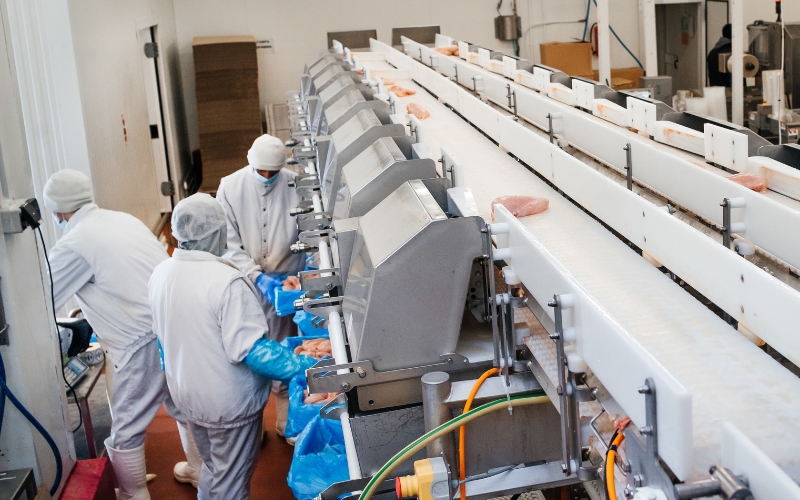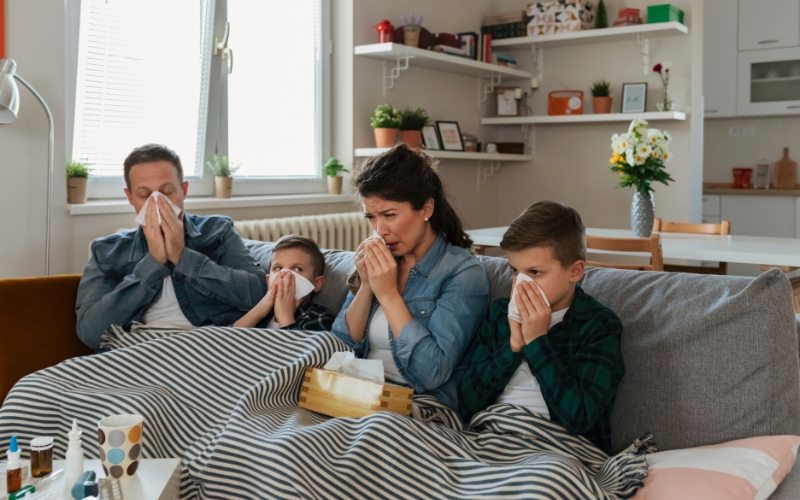When summer arrives, most people think about barbecues, vacations, and longer days. But in the world of food processing and storage, summer also brings risk. As outdoor temperatures rise, maintaining a safe indoor environment becomes increasingly challenging, especially in areas where food safety is paramount. Understanding the relationship between summer heat and food safety, as well as why microbial threats increase in the summer, is crucial for reducing risks before they escalate into a crisis.
The Link Between Summer Heat and Food Safety
It’s not just about sweating staff or faulty HVAC systems. Elevated indoor temperatures during summer months can create ideal conditions for microbial growth. Bacteria such as Salmonella, Listeria, and E. coli thrive in warm, humid environments. Mold also thrives in these conditions. This can spell disaster in areas such as cold storage units, food preparation zones, and transportation facilities.
According to the CDC, foodborne illnesses tend to spike in the summer because bacteria multiply more rapidly in warmer temperatures. In indoor environments where temperature regulation falters, the risks compound. These areas include loading docks, kitchens, and even walk-in coolers.
Equipment Overload: A Hidden Food Safety Risk
When outdoor temperatures rise, HVAC systems and refrigeration units work overtime. This increases energy costs and makes failures more likely. One momentary lapse in temperature control can result in spoiled ingredients, unsafe ready-to-eat products, and/or mold accumulation. And what’s worse is that many facilities don’t notice until it’s too late. Cold storage logs may not capture short-term fluctuations that allow pathogens to establish a foothold. And the result is a higher chance of contamination and, ultimately, product recalls.
Surface and Air Hygiene Matters More in Summer
Warmth and moisture also encourage microbial growth in the air and on surfaces, especially in areas such as post-rinse zones or processing lines. Even with rigorous cleaning procedures, contamination can still occur through inadequate ventilation or inconsistent humidity control.
That’s why summer is about more than cooling the space. It’s also about creating an environment where microbes have fewer chances to survive in the first place. That means taking air and surface hygiene seriously.
Humans Play a Role Too
It’s more than equipment during the hot months. Human behavior also tends to shift in the summer. Some of it is for comfort. Staff may prop open doors to improve airflow, which unknowingly introduces contaminants. Extra condensation from ice machines, HVAC units, or even leaky pipes can create breeding grounds for mold and bacteria if they aren’t addressed quickly.
Some of it is just reality. There’s increased absenteeism due to summer illness, family considerations, and, yes, sometimes even playing hooky (though that can be year-round). There’s also the fact that sometimes the heat can cause lethargy, which prevents some things from being done as well as they should. They can all leave sanitation practices rushed or incomplete, which increases the overall risk to food safety operations.
Staying Ahead of Summer Microbial Risks
Here are a few steps food processing and storage facilities can take:
- Audit temperature regulation systems weekly during peak summer months.
- Invest in environmental monitoring that includes both air and surface sampling.
- Control humidity with dehumidifiers or environmental tech built to reduce microbial loads.
- Limit door openings in cold storage and high-risk areas, using air curtains or timed alarms.
- Install continuous air and surface purification technology to maintain a low microbial presence in critical areas.
How DHP® Can Help
Synexis’ patented Dry Hydrogen Peroxide (DHP) technology offers a proactive way to control microbial threats in indoor spaces, including during the summer heat. DHP is an addition to your traditional cleaning methods, working continuously without interrupting day-to-day activities to help reduce the presence of bacteria, mold, and viruses.
In seasons where bacteria flourish (and even those where it doesn’t), DHP provides a reliable layer of protection that doesn’t fade between cleanings or depend on perfect climate conditions.
Summer brings unique challenges to food safety. Higher temperatures, strained systems, and shifting human behavior create conditions that allow pathogens to thrive. By understanding the connection between summer heat and food safety, and by implementing smart environmental controls, businesses can maintain high safety standards regardless of the season.










